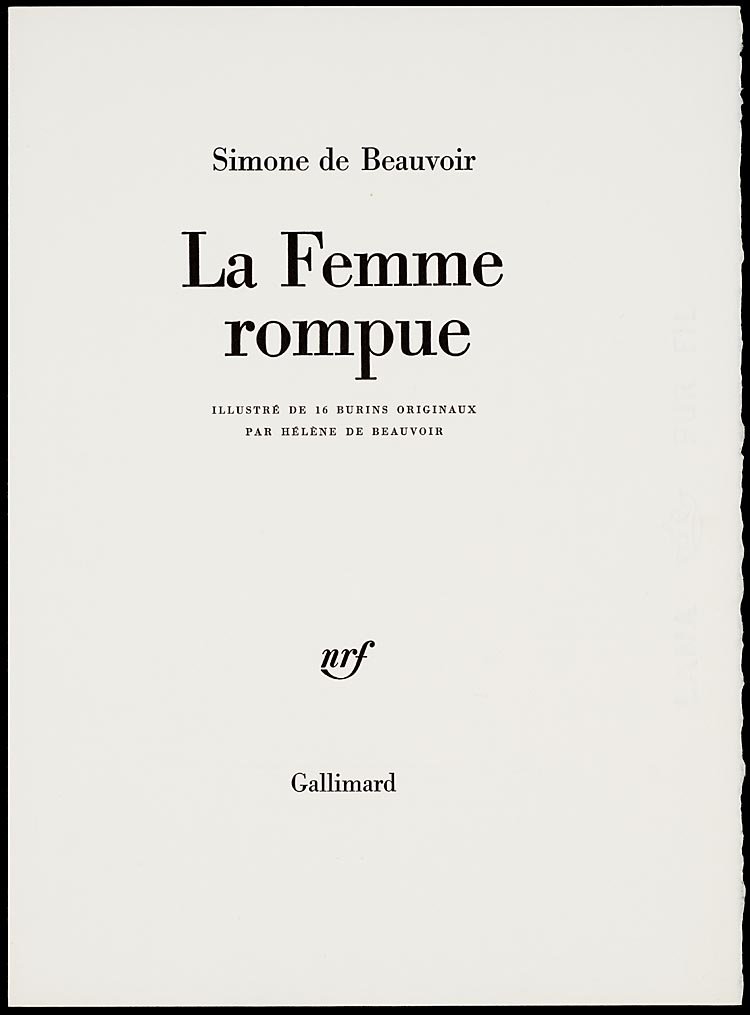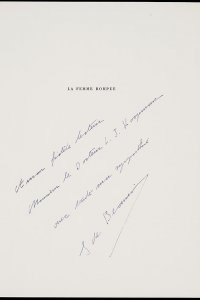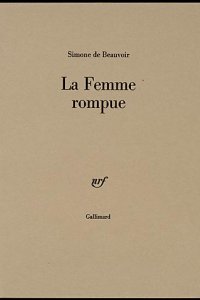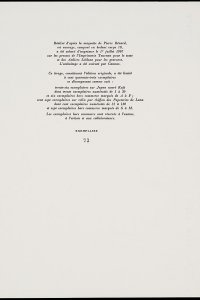La femme rompue
Year: 1967
Author: Simone de Beauvoir (1908 - 1986)
Artist: Hélène de Beauvoir (1910 - 2001)
Publisher: Gallimard
Contrast
Wrongly interpreted or not, the negative judgment of La femme rompue failed to hurt illustrator Hélène de Beauvoir's career. While her famous sister Simone moved in the centre of cultural and intellectual Parisian circles with her companion Jean-Paul Sartre (1905-1980), Hélène lived a rather withdrawn life in the Alsace with her husband Lionel de Roulet. Simone would meet artists in cafés like Café le Flore, and at parties organised by the prestigious publisher Gallimard, including Cocteau, Camus, Genet, and Giacometti. She even rejected an illustration by Picasso that was supposed to serve as the front cover of the existentialist magazine Les temps modernes, which she had founded together with Sartre.
Hélène had always stood in the shadow of her sister, who was two years older. Simone, who was so much more successful, didn't always understand why Hélène didn't give up on her problematic career as an artist, but she did always visit all of Hélène's exhibitions faithfully. To Simone, success was an important factor in maintaining her motivation to work. Hélène had her first exhibition in Paris in 1936, and later had shows in Florence, Milan, and Tokyo, among other cities. Her decorative abstract art was influenced by cubism. She focused mainly on painting, but she also illustrated the book Paysages et destines balzaciens by Amédée Ponceau, which is also part of the Koopman Collection (signature: K 145).
The copy of La femme rompue in the Koopman Collection is number 73 out of 107 numbered large-paper copies. The edition was published by Gallimard, like the other works of both De Beauvoir and Sartre. A salacious detail is that Gallimard initially had strong reservations as far as De Beauvoir's work was concerned. The renowned firm was afraid that the publication of such 'feminine' literature would give it the mark of a publisher intent on overturning the social order, which would scare off buyers and critics alike. It is quite clear by now that this fear was completely unfounded.
Bibliographical description:
Description: La femme rompue / Simone de Beauvoir ; ill. de 16 burins orig. par Hélène de Beauvoir. - Éd. Orig. - [Paris] : Gallimard, 1967. - 165 p. : ill. ; 40 cm
Printer: Tournon (text); Atelier Leblanc (etchings)
Edition: 143 copies
This copy: Number 73 of 107 on Lana
Type: Bodoni
Binder: Cannac (box)
Note: With handwritten dedication to Louis Koopman by the author; With prospectus
Bibliography: Bénézit 2-937 ; Monod-1265
Shelfmark: KW Koopm A 409
References
- Deirdre Bair, Simone de Beauvoir: A biography. New York, Summit Books, 1990
- Simone de Beauvoir, Tout compte fait. Paris, Gallimard, 1972
- Jean-Louis Ferrier, 'Sur la peinture d'Hélène de Beauvoir', in: Les temps modernes, 18 (1963) 201, p. 1504-1512
- Claude Francis, Fernande Gontier, Les écrits de Simone de Beauvoir: La vie, l'écriture Paris, Gallimard, 1979


![Ets door Hélène de Beauvoir (p. [53])](/sites/default/files/styles/galerie/public/images/la_femme_rompue_p53.jpg?h=823c10a2&itok=hZs4pmNq)






